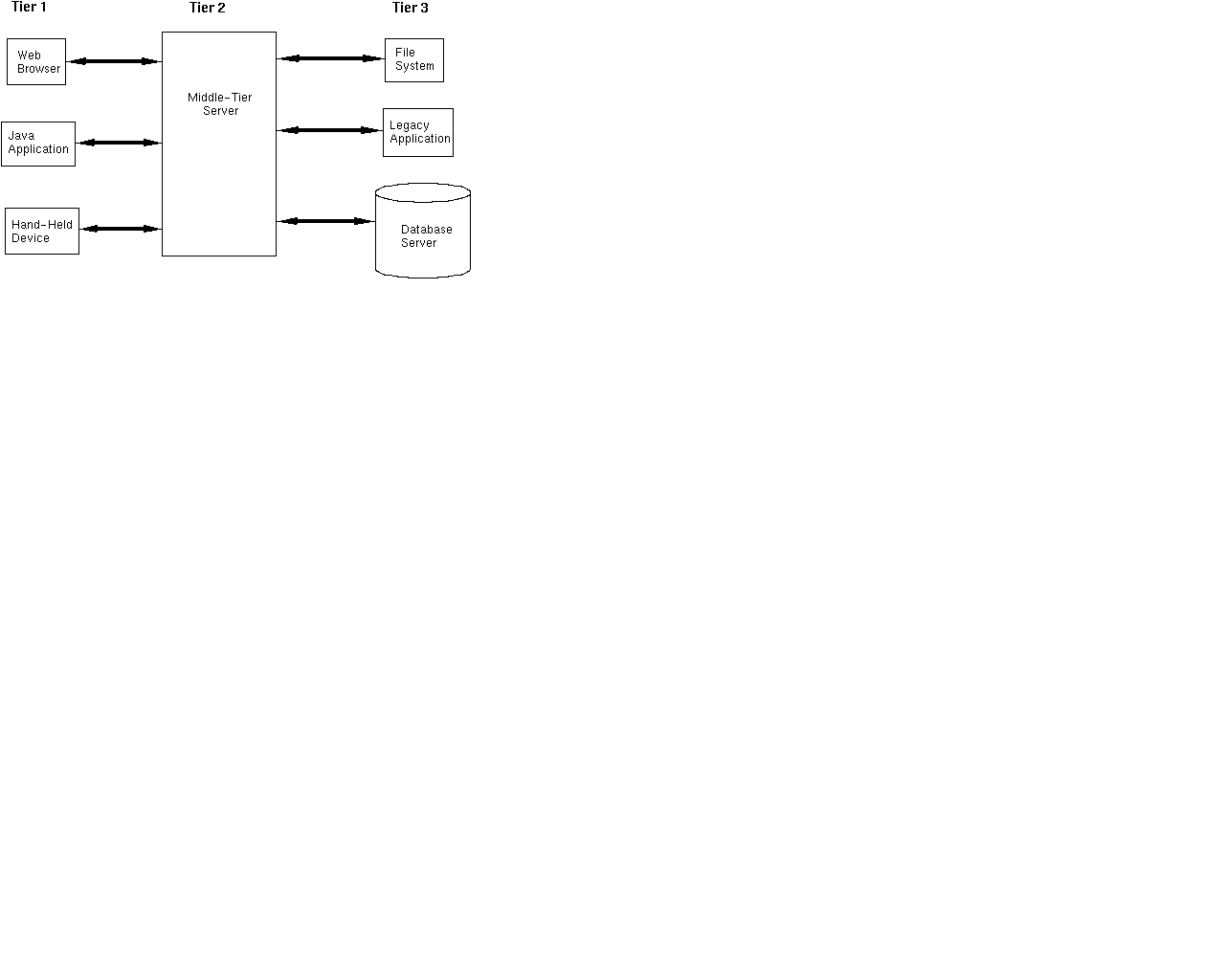Benefits of Middle-Tier Servers
A middle-tier server plays a vital role in a three-tier application. It handles requests from clients, shielding them from the complexity involved in dealing with back office systems and databases. The middle-tier server might support a variety of clients, such as Web browsers, Java applications, and hand held devices. The clients handle the user interface. They do not query databases, execute complex business rules, or connect to legacy applications. They let the middle-tier server do these jobs for them transparently.
Figure 1-1 illustrates a three-tier application. Tier 1 is composed of multiple clients, which request services from the middle-tier server in tier 2. The middle-tier server accesses data from the existing systems in tier 3, applies business rules to the data, and returns the results to the clients in tier 1.

FIGURE 1-1 A Three-Tier Client/Server Application
Middle-tier servers provide business services to clients. For example, a middle- tier server in an online shopping application might provide a variety of services: catalog lookup, order entry, and credit verification.
Middle-tier servers also provide system-level services:
- Remote access to clients and back-office systems
- Session and transaction management
- Security enforcement
- Resource pooling
Because the middle-tier provides these services, the clients can be thin, simple, and rapidly developed. You can integrate new clients with existing applications and databases, protecting your investment in legacy systems.
Middle-tier servers enable you to create large-scale distributed applications for the enterprise. The architecture of the J2EE platform makes it the ideal choice for developing middle-tier servers.
Prev | Next
TOC | Index
Copyright © 2000 Sun Microsystems, Inc. All rights reserved.
